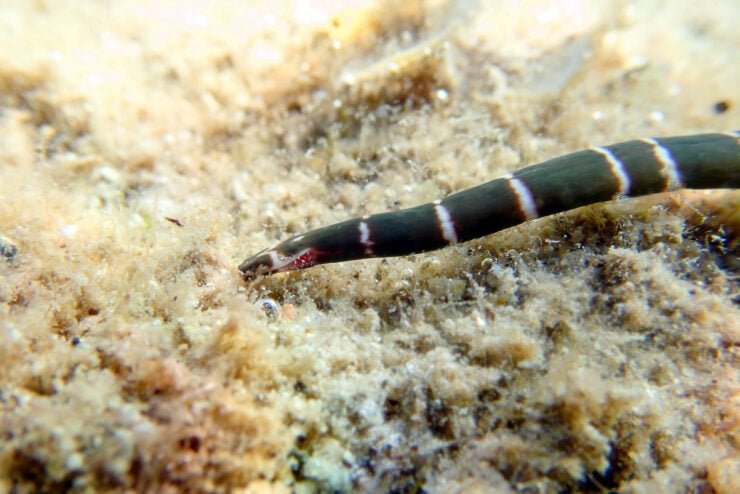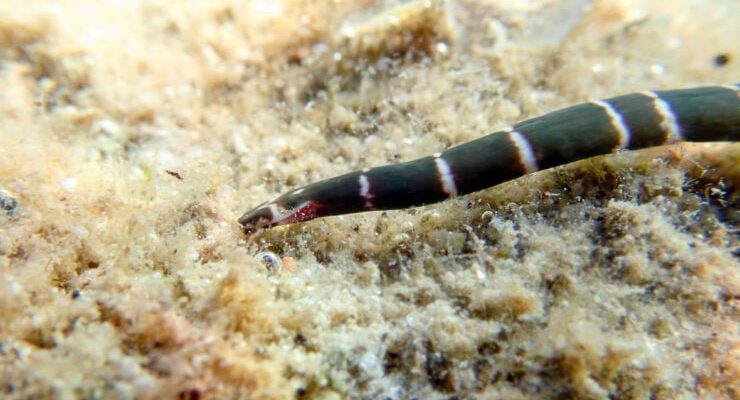
Imagine owning a piece of the ocean in your living room and housing a ribbon worm alongside your vibrant corals and lively fish. While it sounds like an exciting idea, keeping ribbon worms in aquariums brings its own challenges. Here’s the thing: it’s not just about adding water and food. There’s a lot more you need to consider. In this article, we’ll dive into what makes ribbon worms tick, how to care for them, and whether they can really thrive in an aquarium setting.
Understanding Ribbon Worms
Let’s start with the basics. Ribbon worms belong to the phylum Nemertea, and they are known for their incredibly long, slender bodies, which can stretch up to several meters. These worms often exhibit bright colors, which can be a beautiful addition to your aquarium display. They’re mostly marine creatures, thriving in various environments—from shallow waters to deep-sea habitats.
You might be wondering, what makes them so special? Ribbon worms are carnivorous and use a unique feeding mechanism called a proboscis to capture prey. This specialized structure can shoot out and grab unsuspecting creatures, which is pretty impressive considering how delicate they might look. Their diet typically includes small crustaceans, polychaetes, and even fish fry, which can complicate their care in a controlled environment like an aquarium.
Can You Keep Ribbon Worms In An Aquarium?
Now to the million-dollar question: can ribbon worms survive in aquariums? The answer is somewhat complicated. While it is theoretically possible to keep them in an aquarium, there are several factors you must consider.
First, the size of your aquarium matters. Ribbon worms can grow quite large, so a spacious tank is essential. A small aquarium won’t just limit their growth; it could also lead to stress and health issues for the worm. Ideally, you’d want a tank that’s at least 50 gallons, allowing enough room for the ribbon worm to explore and thrive.
Also, the tank environment plays a significant role. Ribbon worms prefer a sandy substrate where they can burrow and find shelter. If your aquarium doesn’t mimic their natural habitat, chances are they won’t do well. A balanced, stable environment with appropriate filtration and water quality is crucial for their survival.
Tank Conditions for Ribbon Worms
Setting the right conditions for your ribbon worm can feel a bit like preparing a home for a pet. Here are a few essential factors you should focus on:
- Water Quality: Ribbon worms thrive in clean, well-aerated saltwater. Regular testing for pH, salinity, and ammonia levels is a must. Aim for pH levels between 7.5 and 8.5.
- Temperature: A stable temperature range is important. Most ribbon worms prefer water temperatures between 68°F and 78°F. Sudden changes in temperature can cause them stress.
- Filtration: A good filtration system helps maintain water quality. It’s best to avoid strong currents, as ribbon worms prefer calm waters.
- Substrate: A sandy substrate is ideal because it allows them to burrow. Avoid sharp rocks or gravel that could injure their soft bodies.
By focusing on these factors, you can create a suitable environment that mimics their natural habitat and supports their survival.
Feeding Ribbon Worms in Aquariums
Feeding your ribbon worm can be one of the more challenging aspects of keeping them. They have specific dietary needs that should be met to ensure they thrive. Remember, ribbon worms are carnivorous. Their diet typically consists of small crustaceans and other marine life. Here are some feeding tips:
- Live Food: Because ribbon worms are natural hunters, feeding them live food like small shrimp or worms can be beneficial. It stimulates their predatory behavior and encourages healthy activity.
- Frozen Foods: If live food isn’t feasible, you can offer thawed frozen foods such as brine shrimp or bloodworms. Just make sure that whatever you choose is small enough for them to capture and eat.
- Feeding Frequency: Start with feeding every few days. Monitor their eating habits; if they seem less active or refuse food, you might want to adjust your approach.
Feeding can be a fun experience, but be sure not to overfeed. Leftover food can lead to water quality issues, affecting not only your ribbon worm but also the other inhabitants of your aquarium.
Common Challenges in Keeping Ribbon Worms
While keeping ribbon worms is possible, it’s not without its challenges. Here are some common problems you might face:
- Burrowing Behavior: Ribbon worms love to burrow, and this can make them hard to spot in your aquarium. Sometimes you’ll think they’ve disappeared completely! Make sure your tank setup allows for burrowing without stress.
- Compatibility Issues: If you have other fish or invertebrates, you need to consider compatibility. Some fish may see ribbon worms as a food source! Always research the species you’re introducing into the tank.
- Water Quality Monitoring: Keeping the water parameters stable can be tricky and requires diligence. Regular water changes and testing are a must to keep your ribbon worm healthy.
By anticipating these challenges, you can better prepare for successful ribbon worm care. It’s all about creating the right environment and being attentive to their unique needs.
Alternative Options for Marine Enthusiasts
If you’re still unsure about caring for ribbon worms, there are plenty of alternative creatures to consider for your marine aquarium. Many saltwater species are beginner-friendly and warrant less specialized care.
For example, corals or smaller fish like clownfish can add beauty and excitement to your aquarium without the specific care needs of a ribbon worm. They thrive in similar water conditions and are more resilient, making them great options for new aquarists.
Let’s not forget about other invertebrates like hermit crabs or sea stars. They can add diversity to your tank and usually require less meticulous care compared to ribbon worms.
So, can ribbon worms survive in aquariums? Yes, but it takes careful planning and a commitment to providing the right conditions. By creating a suitable habitat, monitoring their health, and keeping an eye on water quality, you can enjoy the beauty of these unique creatures.
However, if you’re a beginner or looking for a less demanding marine companion, there are plenty of wonderful alternatives out there. Ultimately, it’s all about finding the right fit for both you and your aquatic ecosystem. Happy aquascaping!

